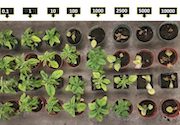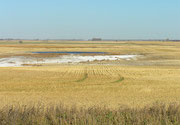| |
| |
 |
 |
| |
 |
|
@{mv_date_MMM d, yyyy}@ |
|
| |
 Christine O’Reilly, OMAFRA forage and grazing specialist, warns that recent weather conditions mean an increased risk of nitrates in forage crops, which can increase silo gas production and cause nitrate poisoning in livestock.
» Read more...
Christine O’Reilly, OMAFRA forage and grazing specialist, warns that recent weather conditions mean an increased risk of nitrates in forage crops, which can increase silo gas production and cause nitrate poisoning in livestock.
» Read more...
University of Alberta research shows spot-treating soil with the mineral reduced the overall occurrence and severity of the disease by 35 to 91 per cent, which could give farmers an important management option.
» Read more...
The CAYC’s main task is to ensure that the perspectives of youth in agriculture are well understood, and to help inform on policy, programs, planning and decision-making.
» Read more...
|
| |
 |
 |
| |
|
| |
 A prolific seed producer, redroot pigweed is present in high numbers in many fields in Manitoba and elsewhere across the Prairies. Recent weed surveys indicated redroot pigweed was the fifth most abundant broadleaf weed species in Manitoba. Researchers at the University of Manitoba are working on developing rapid molecular diagnostic tools for detecting herbicide-resistant weed biotypes.
» Learn more...
A prolific seed producer, redroot pigweed is present in high numbers in many fields in Manitoba and elsewhere across the Prairies. Recent weed surveys indicated redroot pigweed was the fifth most abundant broadleaf weed species in Manitoba. Researchers at the University of Manitoba are working on developing rapid molecular diagnostic tools for detecting herbicide-resistant weed biotypes.
» Learn more... |
| |
 At the Top Crop Summit, Marla Riekman, soil management specialist with Manitoba Agriculture, discussed how to deal with salinity after a drought. Salinity problems always follow wet dry cycles. It isn’t like salinity is here and then gone – it ebbs and flows. Salinity isn’t a salt problem. It is a water problem. Managing salinity means managing water flow in the soil, which is impacted by the water table.
» Learn more...
At the Top Crop Summit, Marla Riekman, soil management specialist with Manitoba Agriculture, discussed how to deal with salinity after a drought. Salinity problems always follow wet dry cycles. It isn’t like salinity is here and then gone – it ebbs and flows. Salinity isn’t a salt problem. It is a water problem. Managing salinity means managing water flow in the soil, which is impacted by the water table.
» Learn more... |
| |
|
| |
|
|
| |
| |







